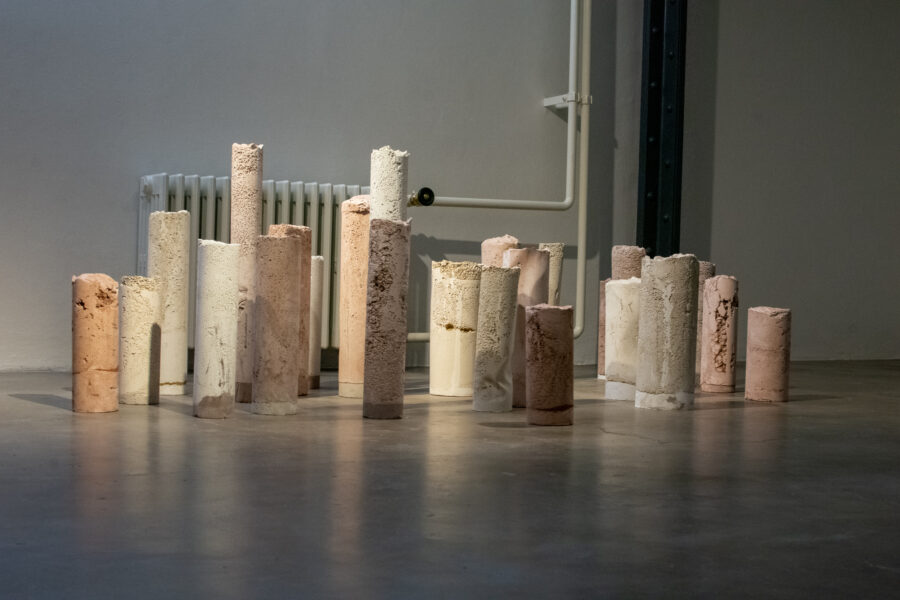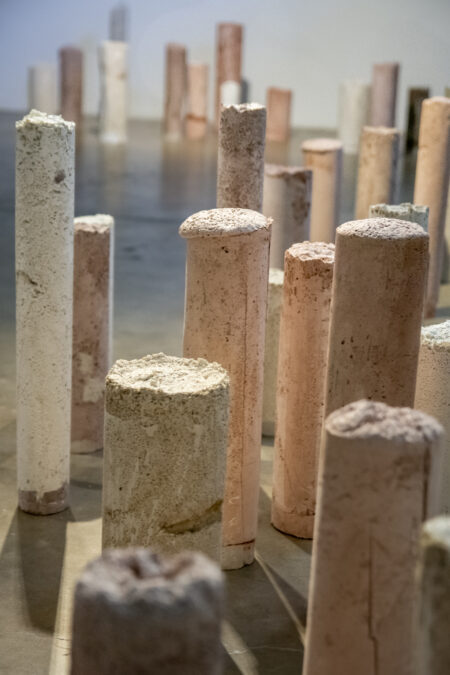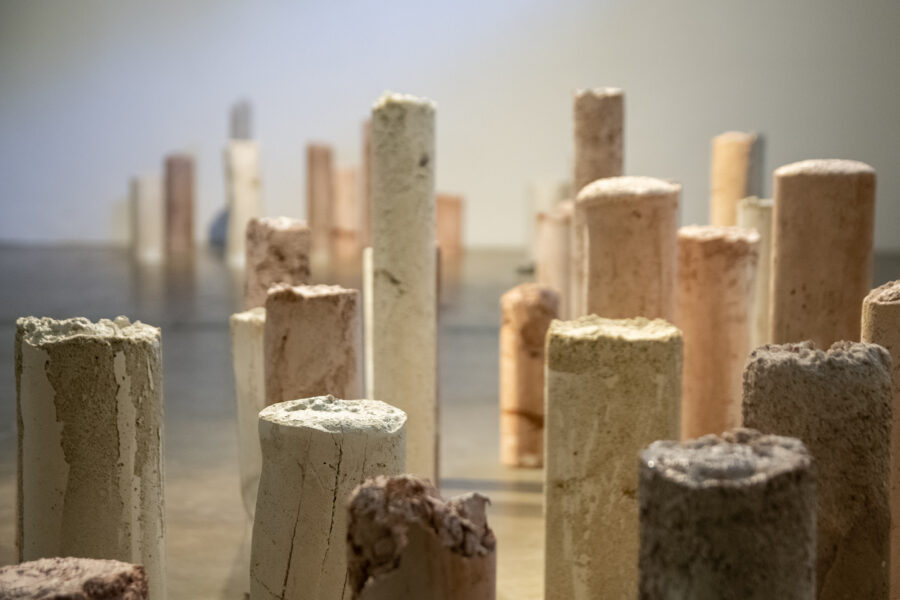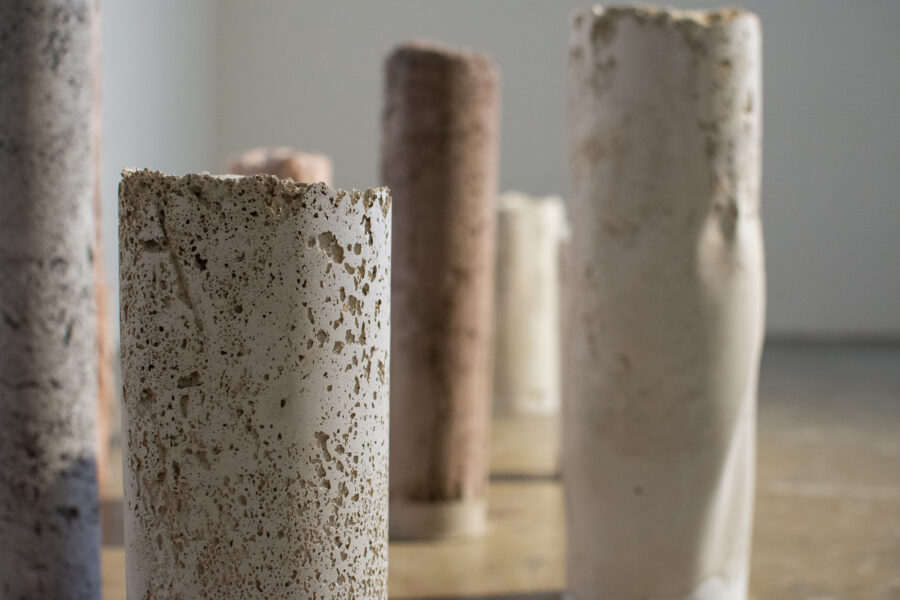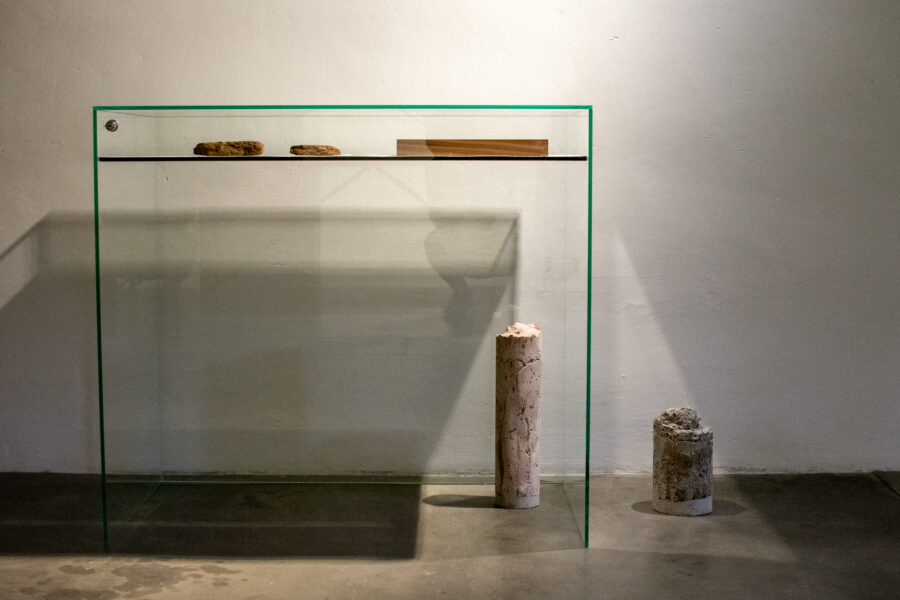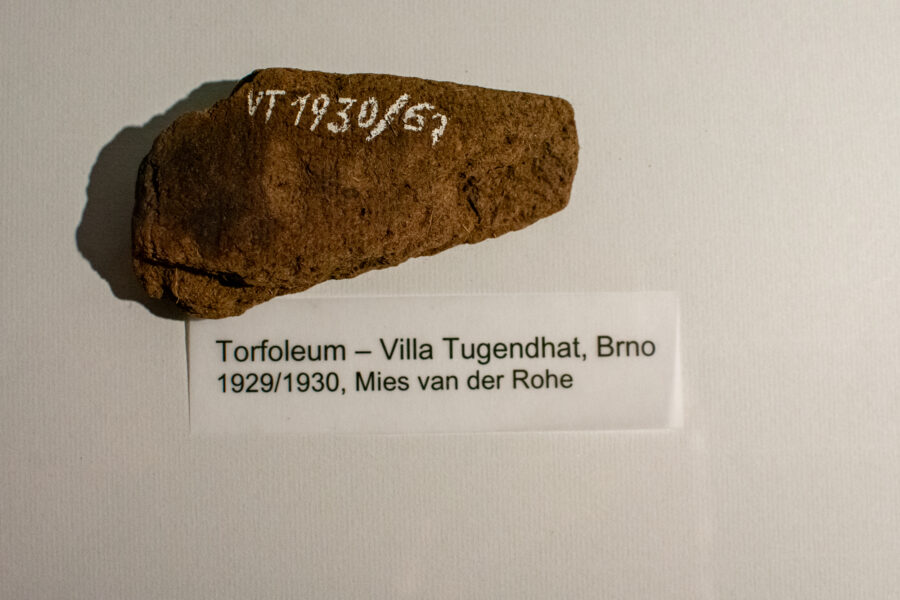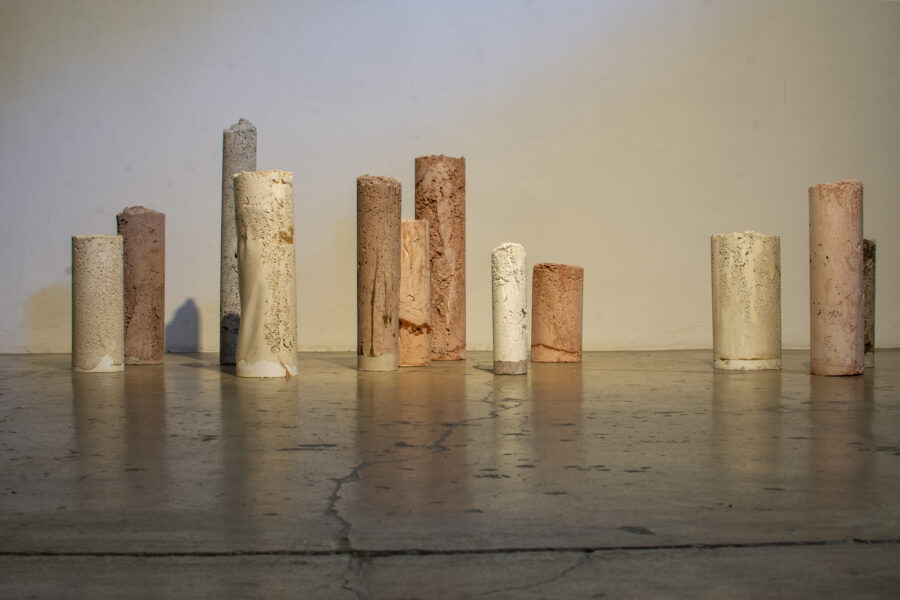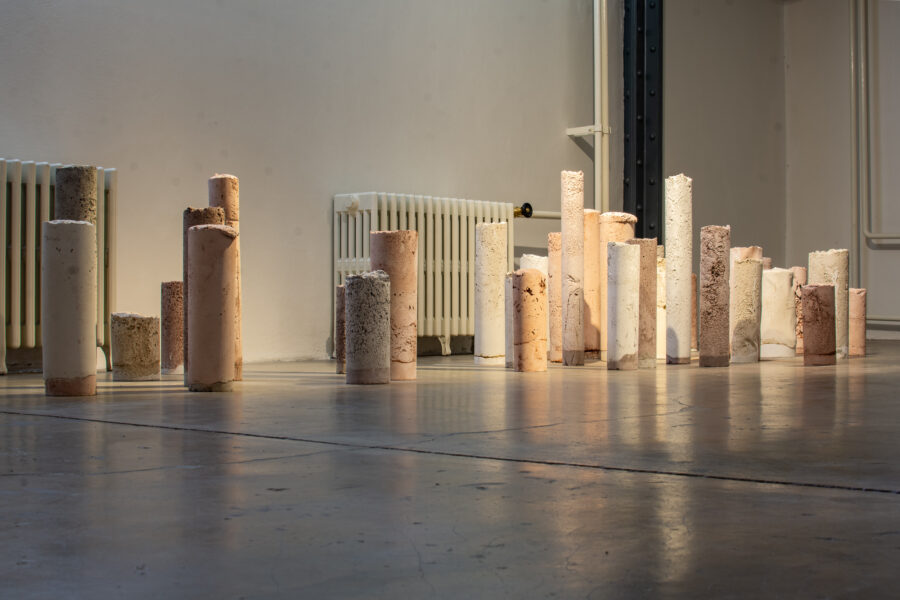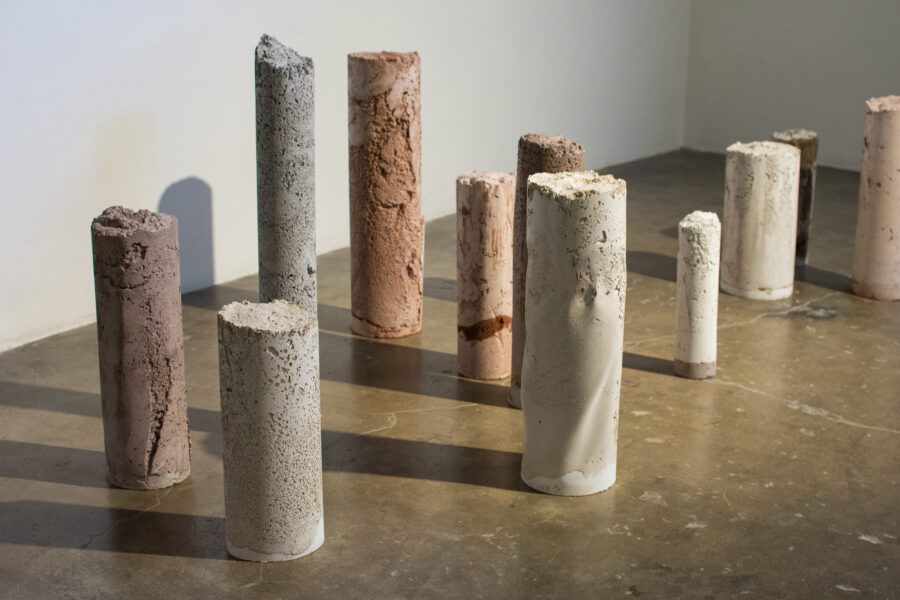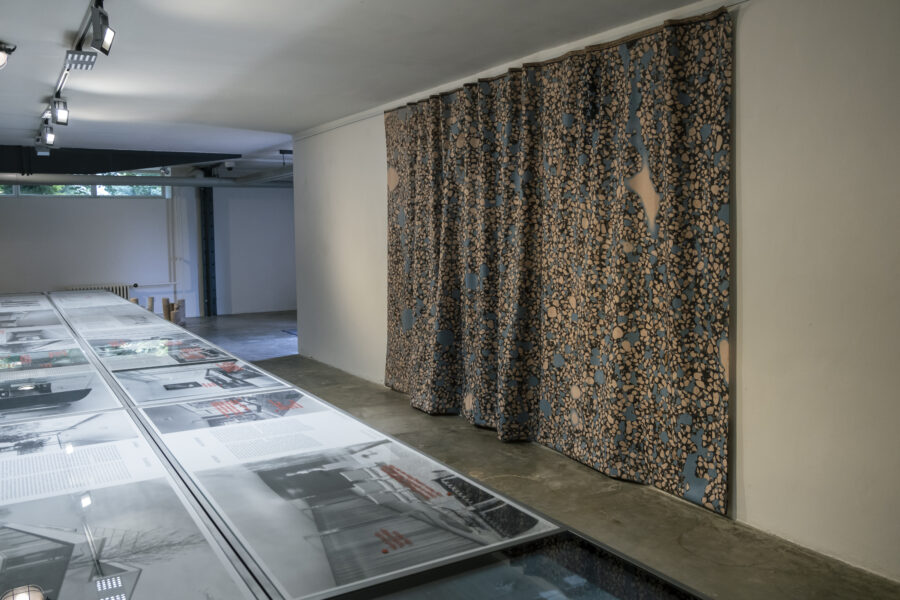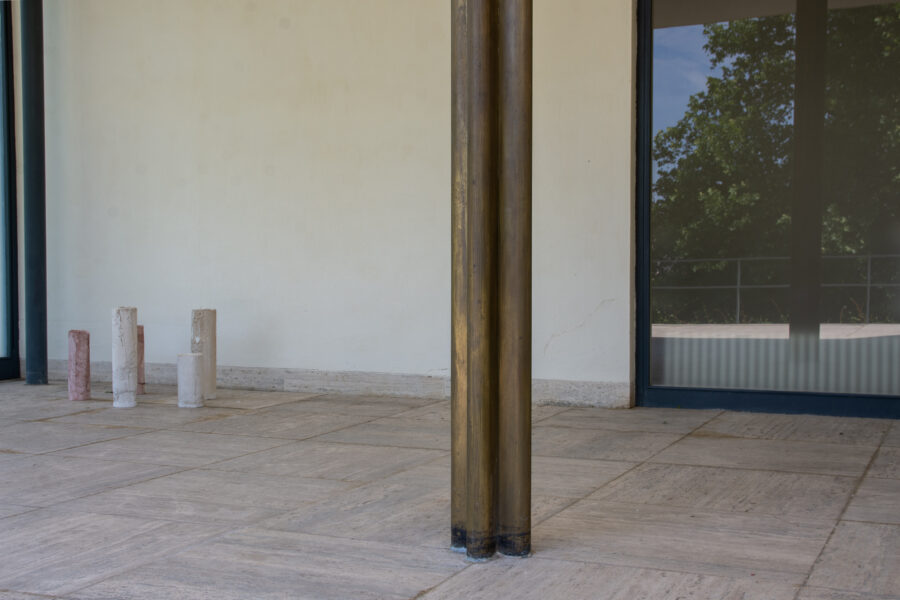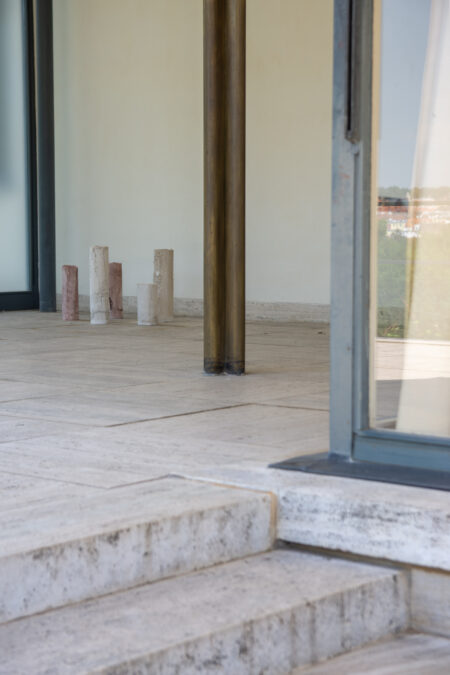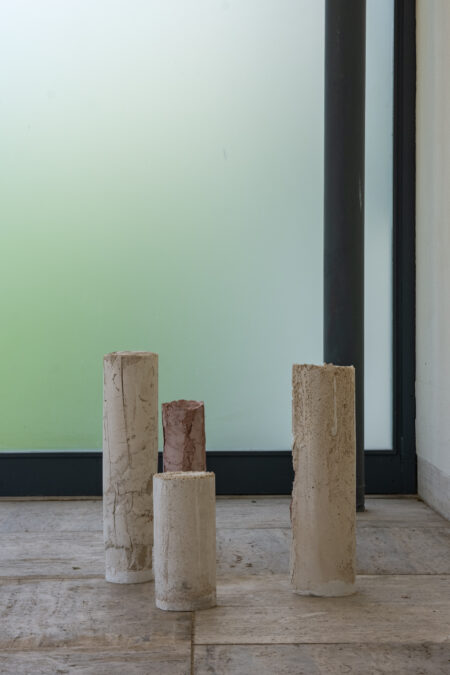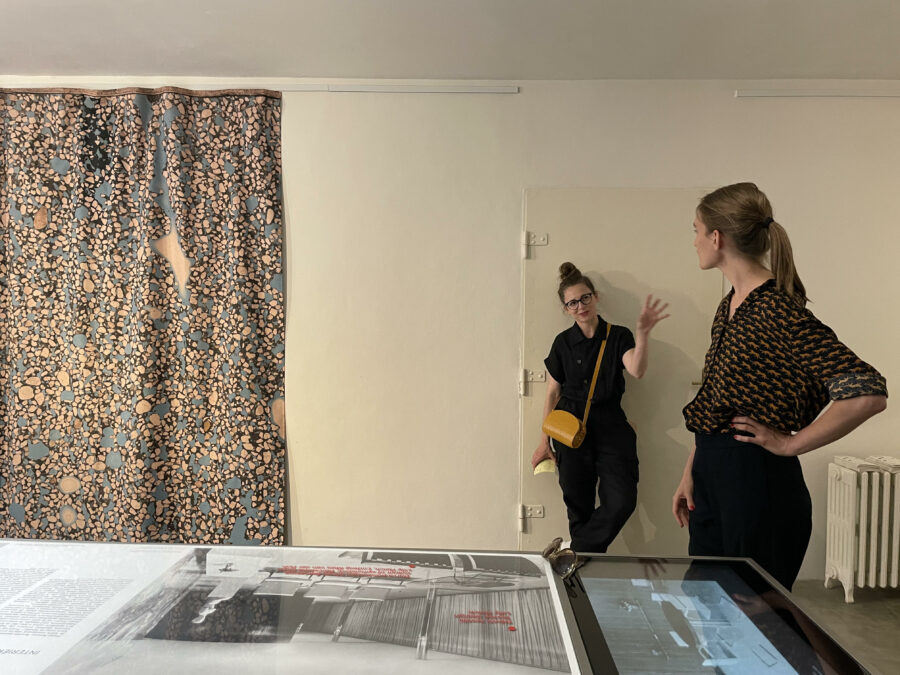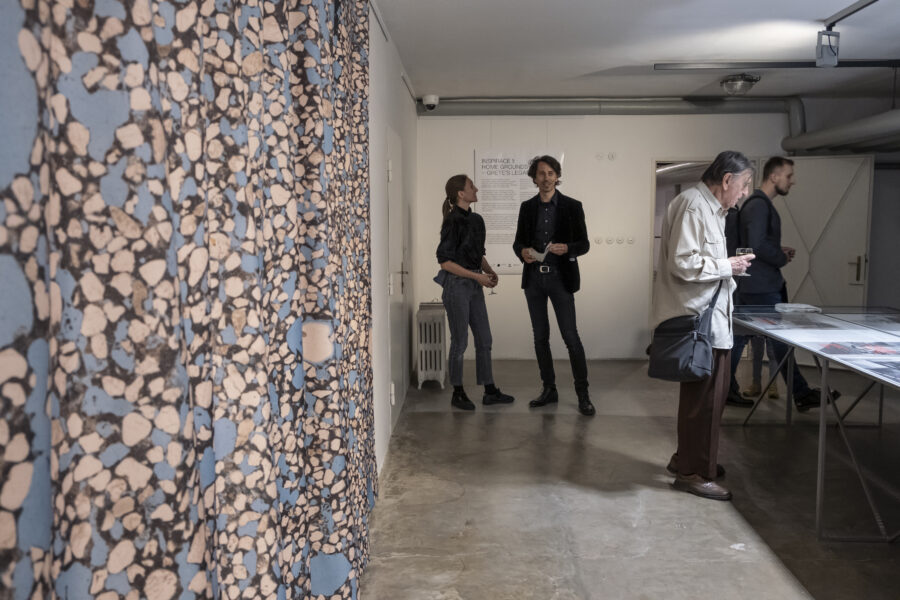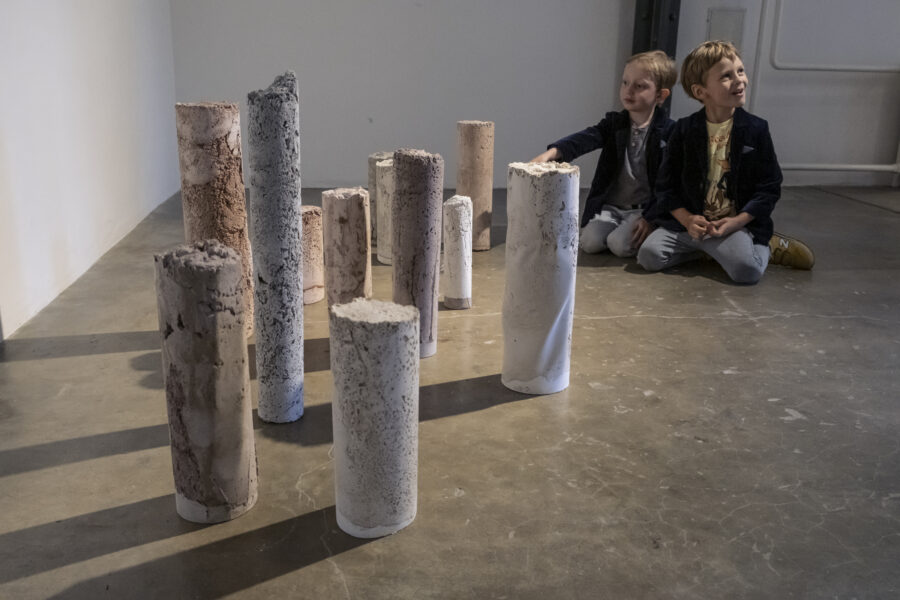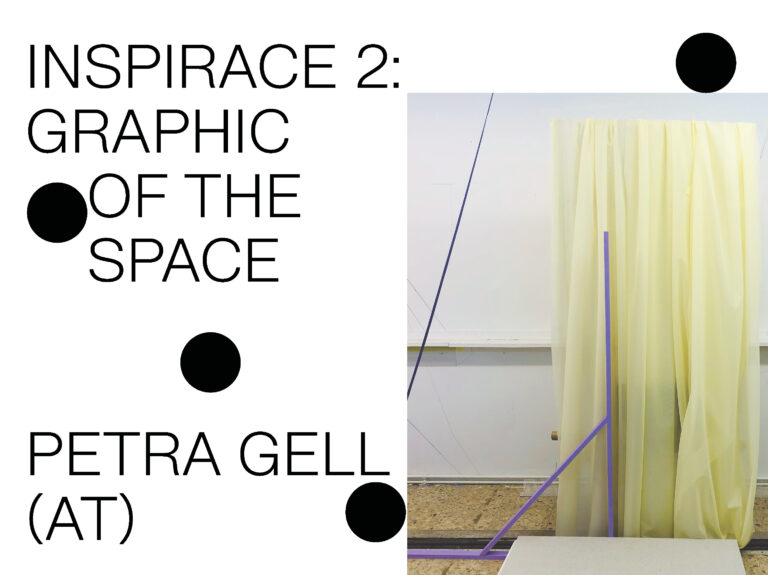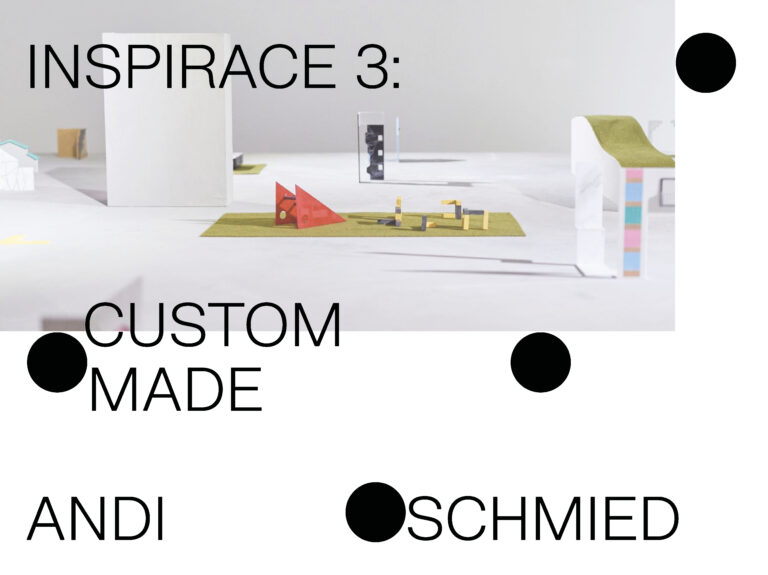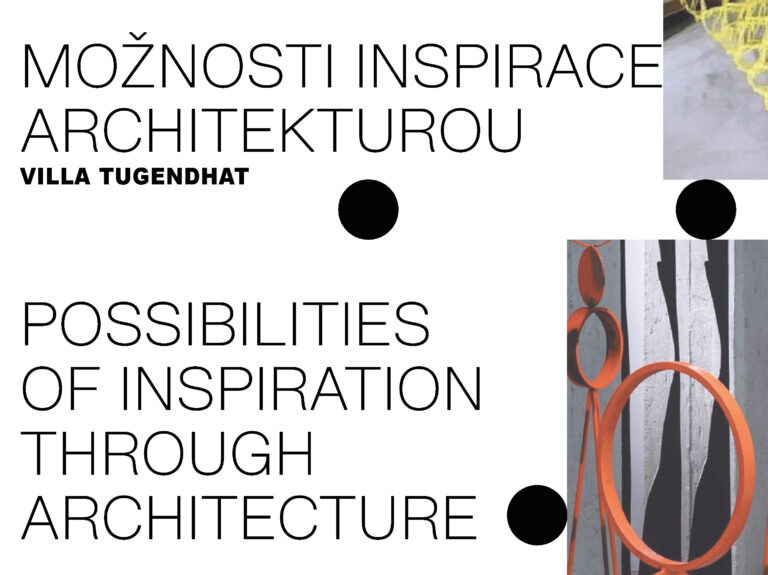
Marit Wolters’ work explores the relationship between nature and architecture and the various aspects of their intersection. Individual materials, exploration of their properties, local material histories and the theme of recycling in artwork often play a central role in her installations.
The exhibition at Villa Tugendhat follows a research internship at the Bauhaus in Dessau in 2017, which produced a series of columns made of aerated concrete with sand of different colours from three Bauhaus locations: the Kornhaus, Meisterhäuser and Stahlhaus (between 1930–33 Mies van der Rohe was director of the Bauhaus art school).
When Mies van der Rohe designed the villa for Grete and Fritz Tugendhat, he paid special attention to the air quality in the house – a special three-stage air conditioning system was therefore designed for the technical floor, which occupies more than 400 m2.
The exhibition at Villa Tugendhat titled Home Grounds – Grete’s Legacy includes a series of several dozen unique objects made of aerated concrete which were created using local materials collected on the grounds of the villa: Bratčice sand, which can be found on the ground floor terrace in the villa’s garden (a macerate from it was also used to colour the façade of Villa Tugendhat to achieve its specific yellowish colour), a fragment of travertine from the original garden staircase, brick fragments or clay and stones from the garden.
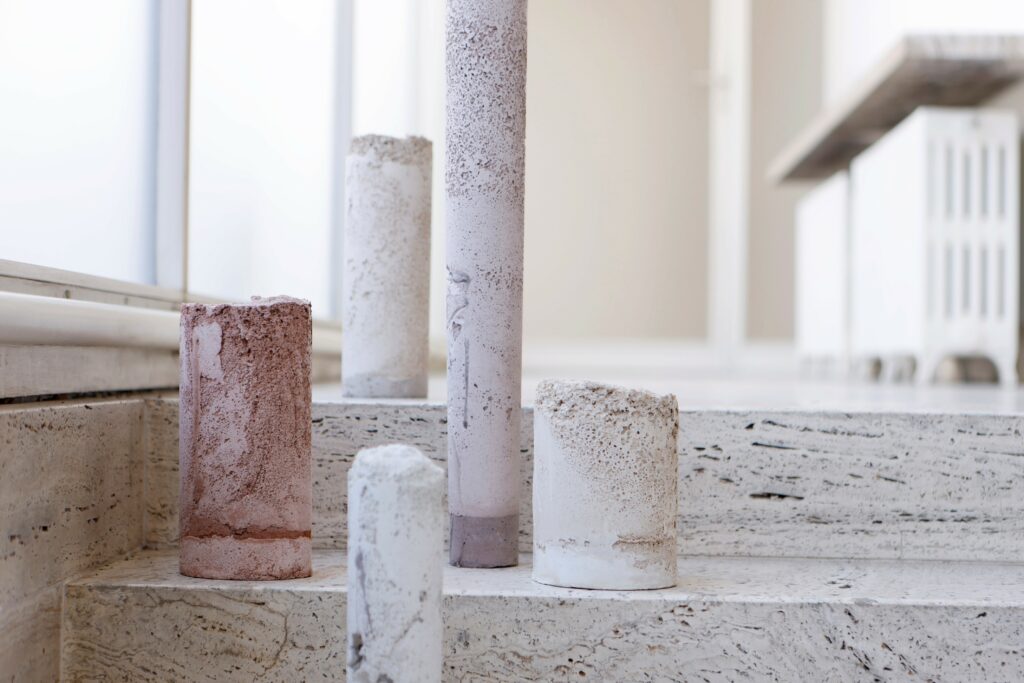
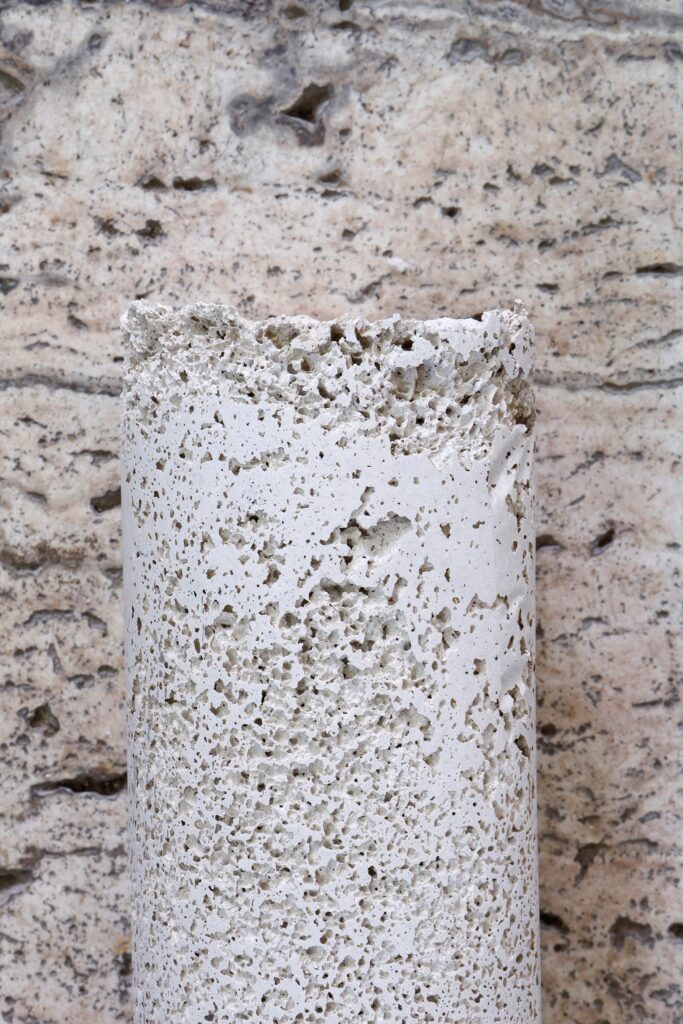
For Marit, aerated concrete, by its nature and composition, is a direct link between architecture and nature. It gives people the space to shape it, it adapts to a given form, but internally it grows according to its own rules. Like the space of the villa, porous concrete is permeated with air. The intermingling of inside and outside is also a dominant feature of Mies’ design…
Marit Wolters is a German sculptor living and working in Vienna. Her work explores the aesthetic potential of architectural materials, processes and structures and their interaction with other social and ecological systems. In the architectural context, the interconnection between inside and outside, the oscillation between nature and architecture, material and architectural research, play a decisive role for her. Marit Wolters studied sculpture and architecture-related media in Dresden and transmedia art in Vienna. Her work has been exhibited in exhibitions in Europe, Asia and the USA.
SCHEDULE:
24. 5. 2022, 6 p.m. opening
25. 5. – 10. 7. 2022 exhibition
12. 6. 2022, 5 p.m. discussion Marit Wolters and Antje Prisker (ia curator at the MAK Vienna)
IMPRINT:
Authors of the concept and production of exhibitions
Barbora Benčíková, Ludmila Haasová, Neli Hejkalová (Villa Tugendhat Study and Documentation Centre)
Curator
Neli Hejkalová
Graphic design
Atelier Zidlicky – Marcela Schneiberková
Translation
Kateřina Báňová
The project is realized with financial support of the Ministry of Culture, Czech Republic.


